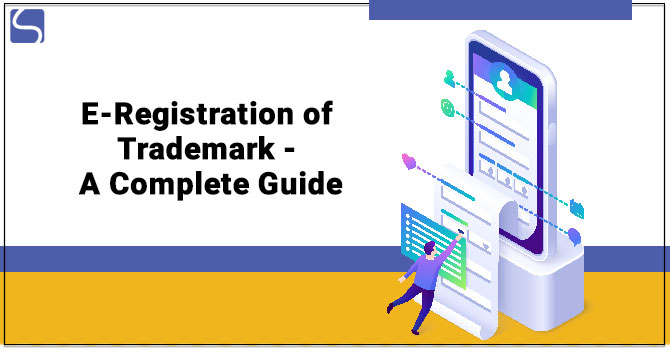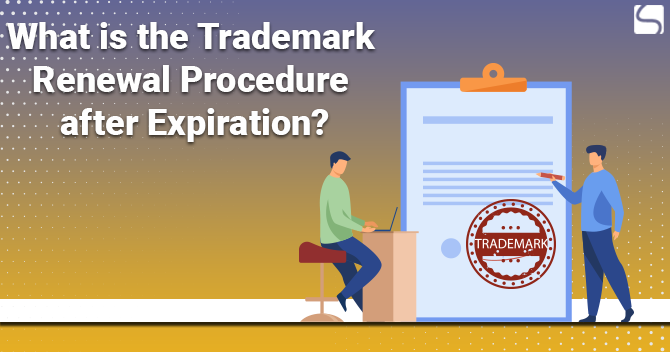E-Registration of Trademark – A Complete Guide

Karan Singh | Updated: Jul 07, 2021 | Category: Trademark
E-Registration of Trademark serves as a distinct identity of the company that differentiates it from another company in the market. A logo, slogan, or brand name can be listed as a Trademark showing to be distinct. A Trademark Registration must be under the Controller General of Designs, Patents, and Trademarks, Ministry of Commerce and Industry & Government of India. Registration of Trademark will be considered to be the Intellectual Property of the Trademark owner.
The Trademark Registration has its own enrolment through filing physically or E-Registration of Trademark. E-Registration of Trademark has made the process quicker & simpler. For physical registration of Trademark ones, used to wait for 15 to 20 days to receive the acknowledgement receipt, but after online registration, one can get the acknowledgement quickly. The importance of this acknowledgement receipt is that the company can use the Trademark with a TM sign next to it until the final registration is done. Hence, E-registration can save your time and effort.
Table of Contents
Points to Remember Before Going for E-Registration of Trademark
The candidate should discuss with Trademark Attorneys before attempting to register their products, names, or company name as not every logo can get incorporated. For instance, they will require examining the following points, which are as follows:
- A selected brand company or product name is available for the Trademark Registration in case another party has applied to register a Trademark. The selected mark looks or sounds are similar to your selected mark, then the Trademark Officer can object to your mark.
- The selected Trademark should be unique; the proposed Trademark needs to be a unique logo, word, picture, or any other find that certainly identify your products and the service is from those of the other.
- Trademarks are territorial rights, and the national rights control their registration and enforcement, and laws can be changed as per the different nations;
- Certain symbols or words are outlawed from recording. For instance, a Trademark that is being contrary to the public order of morality.
- The proposed Trademark cannot be illustrative of the Trademark is too expensive of the products or services or any sort of them then the Trademark Officer will likely object your mark.
Legislation Dealing with Trademarks
The Trade Mark Act, 1999, along with the Trademark Rules, 2017, are the primary laws that govern Trademark Registration in India. Also, at the global level, there are different treaties that control the Trademark Registration, and India is a party to that treaty, which are as follows:
- Paris Convention for the Industrial Property Protection, 1883;
- Nairobi Treaty on the Olympic Symbol protection, 1981;
- Protocol concerning Madrid Agreement regarding the International Registration of Marks, 1891.
Other than this, the treaties which are regulated by the WIPO (World Intellectual Property Organisation)[1] which are appropriate in India are:
- Vienna Classification, set out by the Vienna Agreement;
- NICE Agreement on the International Categorisation of Goods and Services.
What is the Process for E-Registration of Trademark in India?
The company, with the aid of a registered Trademark lawyer, can begin the Trademark Registration process online via an online registration portal. It can be considered a pro-active way for the registration. It promotes the company to complete process within six to eight months instead of waiting for two years to get Trademark Registration. The E-Registration of Trademark includes the following steps:

Step 1: Trademark Classification and Search
The initial step is the Trademark Search for applying for the registration of Trademark. After deciding on the mark, a Trademark search is used to check if the selected Trademark is distinct. If there is any present Trademark that is identical to your mark, then Trademark cannot be registered until further changes are done. After the Trademark modifications, the search of Trademark will again be started. If the Trademark is distinctive without any unpleasant mark or word and especially safeguards the emblems, the entity can proceed to the classification process.
The Registry of Trademark has provided trademark Classes, and the company is required to choose a suitable class to apply for the Trademark Registration in that specific class as per the goods and services. The company seek aid from any registered Trademark lawyer to apply in the correct class as per the goods and services for the E-Registration of Trademark.
Step 2: E-Filing of Trademark Application
The following information must be there to apply for E-Registration of Trademark via the online portal available on the Trademark Registry.
- Applicant’s Name;
- Identity proof of the candidate or applicant;
- Identity proof of the business;
- Type of business along with the Trademark Class;
- Business Objective;
- Logo or Slogan or Brand of the desired Trademark;
- Address where the Registration of Trademark has to be done.
The candidate will get a Trademark application number that aids the candidate to track their Trademark application status.
Step 3: Vienna Codification
It is an internal process of the Trademark Registry in India. In case the Trademark consists of a symbolic element/logo, the request is sent to the Vienna Codification. It is a global categorisation of Trademark that permits the Trademark Search of a logo for internal use.
Step 4: Examination of Trademark Application
The Office of Trademark performs a formality check of the Trademark application. The Trademark Officer confirms the information provided in the Trademark application. Trademark Officers keep verifying that the application of Trademark is abided by the rules and regulations set by the Trademark Registry.
If the Trademark Officer has approved the Trademark application, then this application is showed as “Formality Check Pass”. The submission has to undergo another examination round held by the Trademark Registry. The Registry gives an examination report which shows the approval/rejection of the Trademark.
Step 5: Hearing before the Trademark Officer
In case of rejection of the Trademark application, the candidate can file a response to the objection or submit an application for a hearing within four months of publication then the Registry issues the Registration Certificate. In the case of any objection raised from 3rd party, a hearing before the Officer. If the candidate can influence the Trademark Officer with the relevant documents, then the mark will get registered.
Step 6: Publication in the Trademark Journal
If the Trademark gets consent in the hearing, it will get published in the Trademark Journal; if no objection is raised within four months of publication, then the Trademark Registry issues the Registration Certificate. In case of any objection raised from another party, a hearing can be arranged, and the final decision of registering or rejecting the Trademark will be taken.
Step 7: Registration Certificate
Once the COR (Certificate of Registration) is issued, the candidate can use the Trademark with an R sign. The Registry does not issue a physical certificate copy. The candidate can download the same from the Trademark portal using their Trademark application number.
Validity of E-Registration of Trademark
The validity of E-Registration of Trademark is ten years. It can be renewed by applying for Trademark Renewal present on the online website of Registry of Trademark. The renewal of the Trademark is available for six months from the expiry date. It is mandatory to renew the Trademark before the expiry date, or else it will be shown as “abandoned “. The term of the renewed Trademark will be the next ten years. Hence, it is vital to expend a little every ten years for registration and sustain the status of the brand. An unregistered brand can have an impact on sales, while a registered Trademark can have the attention of possible customers.
Conclusion
The Trademark Registry allows detailed E-Registration of Trademark that authorises the submission of the marks online, comprising the entry of the information mentioned above and uploading the respective articles. Moreover, information on the filing of Trademark applications can be found on the Indian Trademark Registry website. The official e-filing fee is 10% lesser than that for the actual filing under the newly informed Trademark Rules 2017.
Read our article:Cost of Trademark Registration – An Overview














